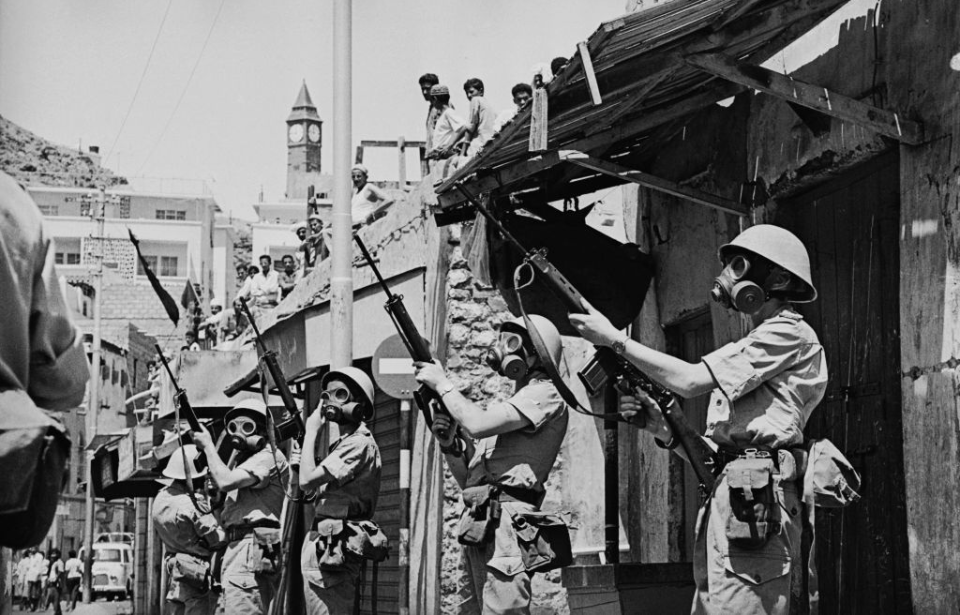The Aden Emergency, which unfolded between 1963-67, was a period of intense turmoil and conflict in British-controlled Aden (modern-day Yemen). The uprising, led by Arab nationalists demanding independence, ignited a series of violent clashes, political unrest and complex dynamics that reshaped the region’s history. The response was exacerbated by grievances related to economic disparities, political marginalization and social inequality under British rule.
The National Liberation Front (NLF) and the Front for the Liberation of Occupied South Yemen (FLOSY) launched a full-scale insurgency against British forces and institutions, eventually merging into the South Arabian Army (SAA). Their goal was to challenge British control and establish an independent state, prompting a struggle for power and control over Aden’s strategic territory.
The Aden Emergency witnessed a rapid escalation of violence as the insurgency intensified. Arab nationalist guerrilla fighters conducted frequent attacks against British military personnel, infrastructure and civilians, employing such tactics as bombings, assassinations and ambushes to undermine British control and demoralize their forces.
In response, the British Army implemented robust counterinsurgency operations to suppress the rebellion and restore order – including deploying the Special Air Service (SAS).
Resentment grew against the British, as they launched attacks that didn’t differentiate between NLF and FLOSY supporters and regular civilians. Among other strategies, they frequently conducted stop-and-search operations on foot and in armored vehicles, in an effort to locate rebels.
Photographer Terry Fincher took the above image while working for the Daily Express, for whom he captured several notable scenes from the Aden Emergency. It shows soldiers with the British Army on a city street with their weapons at the ready and their gas masks in place.
More from us: Battle of Khe Sanh: The Siege That Shook America
The photo was taken on March 8, 1967, toward the end of the conflict. By this point, mounting pressure and changing geopolitical realities forced the British to withdraw from Aden. The conflict resulted in a protracted and challenging process of decolonization, eventually leading to the establishment of an independent People’s Republic of South Yemen.
